Following the special report on the New Syrian Army, the present report focuses specifically on 22 senior military officials with jihadist backgrounds. These include the Minister of Defense, Deputy Minister of Defense, Chief of Staff of the Army, Commander of the Republican Guard, Air Force Commander, 14 division commanders, a deputy division commander, a division chief of staff, and a brigade commander.
As noted in the special report, a significant portion of the organizations comprising the New Syrian Army, including soldiers and commanders, hold or have held extremist ideologies on the Salafi-jihadist spectrum and have been affiliated with organizations of such orientation. The issue of extremist ideology is further underscored by the fact that the New Syrian Army, including senior officials, also incorporates personnel who are not originally Syrian (see, for example, Division 84).
Some of the New Syrian Army units that participated in the fighting against the Druze in Suwayda (July 2025) came from divisions whose commanders have jihadist backgrounds, such as the 40th Division (affiliated with “Ahrar al-Sham”), 52nd Division (affiliated with HTS), the 82nd Division (affiliated with “Ansar al-Tawhid” and whose soldiers were observed in Suwayda wearing ISIS patches), and the 42nd Division (affiliated with “Suqour al-Sham”).
The Salafi-jihadist ideological spectrum, to which a considerable portion of the senior command belongs, may pose a significant challenge to the new regime in Syria (a stability challenge) as well as to Israel (a security challenge). It should be recalled that this ideology regards the State of Israel, along with other groups such as minorities and other religions, as enemies (“infidels”) who must be eliminated or, at the very least, suppressed under Muslim rule.
Finally, it is important to note that this is only a partial list. Firstly, due to significant information gaps regarding military officials and personnel, and secondly, because, as we noted in the report, entire organizations have undergone “rebranding” under the military while, in practice, retaining the same ideology. In other words, it is highly likely that the number of commanders and soldiers in the new Syrian army with a jihadist background or ideology is considerably higher.
Senior Command
Minister of Defense – Marhaf Abu Kasara
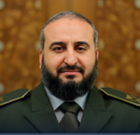
Age 41, born in the town of Halfaya (Hama Governorate), agronomist by profession. Abu Kasara, who served as the commander of the military wing of HTS and as Minister of Defense in the transitional government, was one of the central figures who worked to improve the military capabilities of the rebels in the Idlib area and among the leaders of the offensive that led to the fall of Assad’s regime.
Deputy Minister of Defense – Muhammad Khair Hassan Shu’aib (Abu al-Khair Taftanaz)
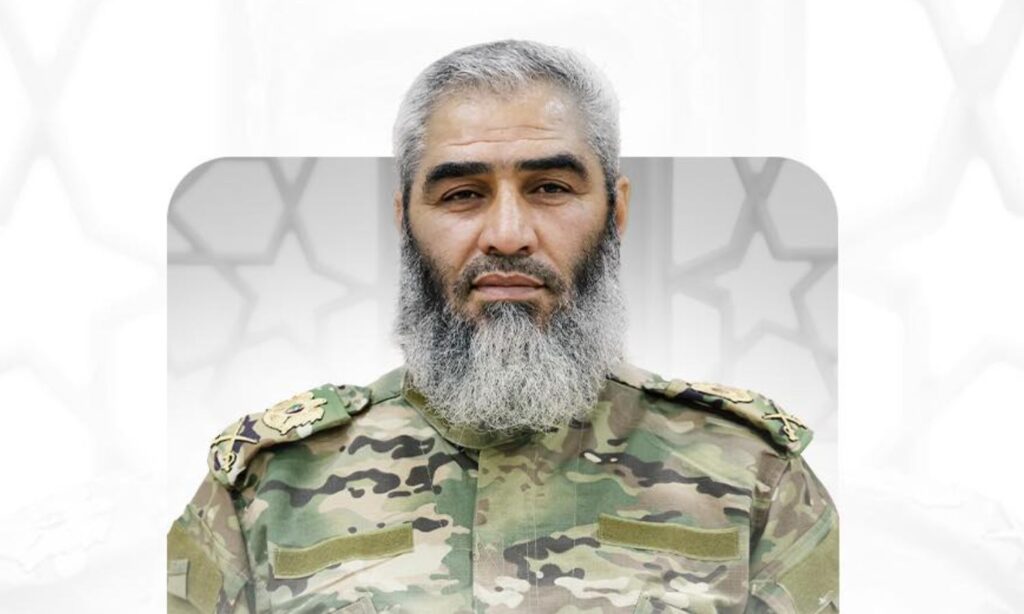
Shu’aib, 48, from a town northeast of Idlib, once served as an officer in Assad’s army before defecting to the rebels at the onset of the civil war. Since 2013, He led a rebel organization called the Abu Bakr al-Saddiq Brigades and over the years commanded several battles in the Idlib region.
In 2019, he integrated his organization into the Fateh al-Mubin coalition (operating under the leadership of HTS) and became one of the senior commanders who planned and led the “Deterrence of Aggression” operation that led to the fall of Assad’s regime. In his last position, he served as deputy commander of the HTS military wing. According to several sources, Shu’aib had ties to Jabhat al-Nusra and Jabhat Fath al-Sham, both of which embraced extreme Salafi ideologies.
Chief of Staff of the Syrian Army – Ali Nur al-Din al-Naasan (Abu Hamza)
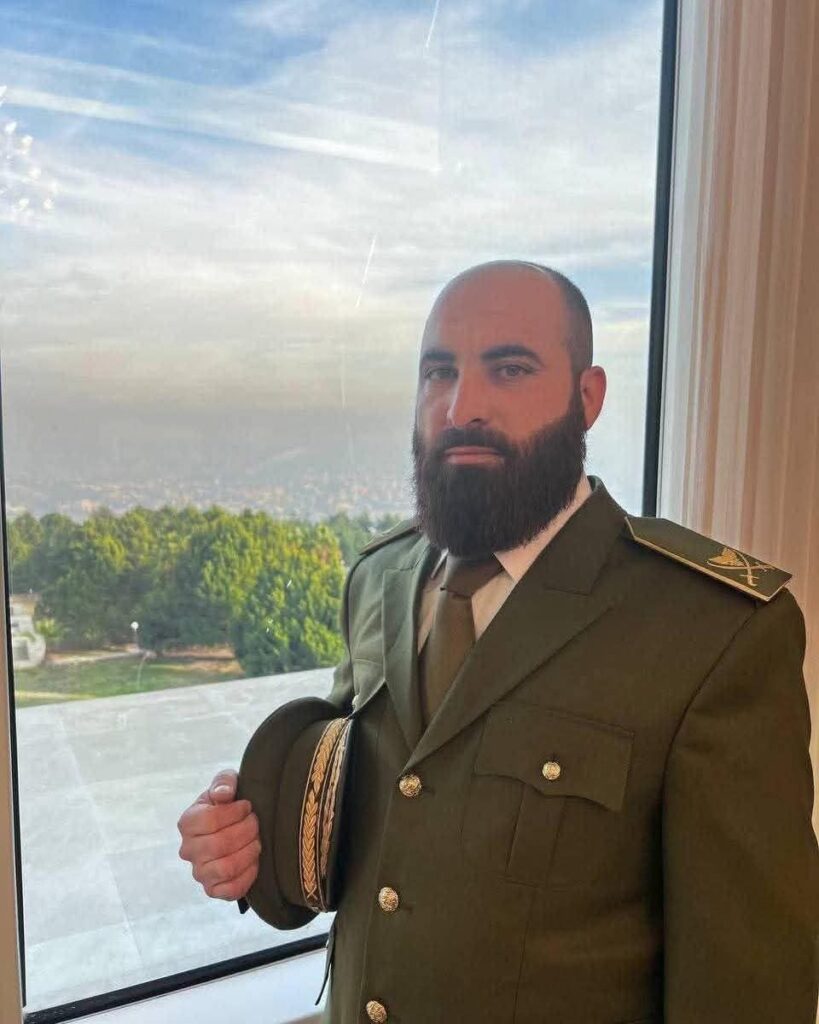
Naasan, originally from the town of Taybat al-Imam north of Aleppo, studied at the military academy of the Syrian Army and served as an officer until he defected to the ranks of the rebels at the beginning of the civil war in 2011. He joined HTS after the organization’s establishment and served in several senior military positions within it.
Commander of the Republican Guard

Abd al-Rahman Hussein al-Khatib (Abu Hussein al-Urduni). Al-Khatib is originally Jordanian and was arrested by the Jordanian authorities due to his jihadist views (he is still considered a wanted terrorist in Jordan). He joined Jabhat al-Nusra in 2013 and later became one of the prominent commanders within HTS and one of Al-Sharaa’s close associates. At this stage, there is very little available information about him.
Commander of the Air Force
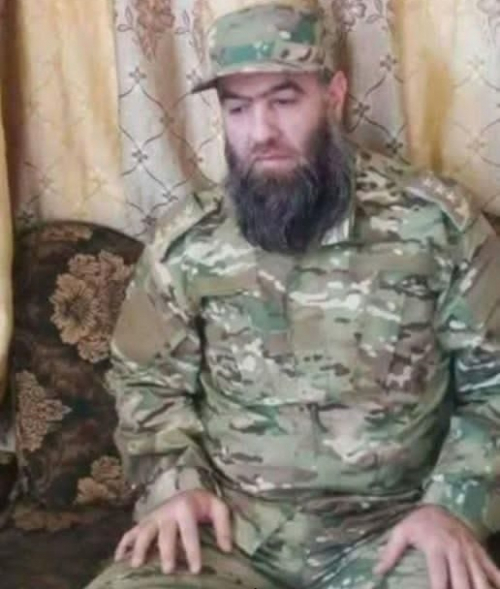
Asim Rashid al-Hawari (Abu al-Qasim Beit Jann). Al-Hawari joined the rebels in Syria at the beginning of the civil war and, over the years served in several senior military positions within HTS. Despite lacking formal military training, he stood out as a field commander and is considered close to Al-Sharaa.
Many sources claim he is originally from Egypt (and even claim he was sentenced to death by the regime), but there are also sources that claim he is Syrian from the Damascus area.
Combat Divisions
Damascus Division
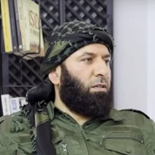
At this stage, there is very little information regarding this division.
In early April, the Al-Sharaa regime announced the appointment of Omar Muhammad Jafteshi (Mukhtar al-Turki) as the commander of this division, and shortly thereafter posts appeared indicating the appointment of a battalion commander in one of the brigades, but no additional information was published beyond that. It is possible that this is an independent unit responsible for the capital area of Damascus, but there are also speculations that it will be replaced or merged with another division.
Jafteshi, who was declared as the division commander, is a Turk who operated in the ranks of HTS during the civil war, considered loyal and very close to Al-Sharaa, and was mentioned as one of the founders of HTS. In addition, there are quite a few reports that Jafteshi is close to Turkish intelligence and served as a liaison for them.
70th Division
This division operates in the eastern Rif Damascus area, and many of its members previously operated as part of the Jaysh al-Islam organization, which promoted an Islamist-Salafi ideology combined with Syrian nationalism. On the one hand, it acted against minorities and other religions and on the other, it fought against ISIS, which it saw as having deviated from Islam.
The number of combatants in the organization stood at several thousand (5,000–8,000), but it is not clear how many of them joined the new division and how many new combatants were recruited after its establishment.
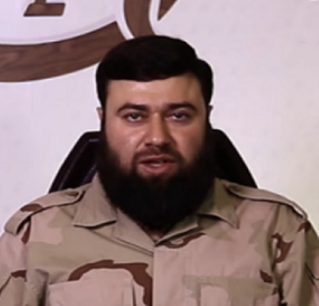
The division commander is Issam Bouidani (Abu Hammam), 50, originally from the town of Douma in the suburbs of Damascus. Before his appointment, he served as the commander of Jaysh al-Islam.
In April 2025, Bouidani was arrested during a visit to the UAE (apparently due to an Interpol request), and as of early July, it seems he is still detained. At this stage, it is unclear whether a replacement has been appointed.
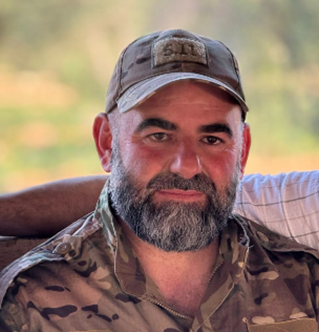
Chief of Staff – Ali Abd al-Baqi (Abu Ma’ruf)- originally from the Douma area in the Damascus suburbs. Until his appointment, he served as Chief of Staff of Jaysh al-Islam and was one of its prominent commanders.
40th Division
This division, responsible for the Daraa region, is composed of former fighters from various rebel groups in southern Syria. In recent months, extensive recruitment has taken place in the provinces of Daraa and Quneitra, alongside the subordination of local organizations such as the Central Committee and various tribal groups to the division’s command.
Sources within the division claim that over 3,000 people from the province have already been recruited (out of about 10,000 applications). After recruitment, soldiers undergo basic training for three weeks, and so far, more than 1,500 individuals have completed such courses.
The division’s forces took part in the fighting against the Druze in the Suwayda province in July 2025, with reports indicating that several soldiers and officers were killed during the clashes.
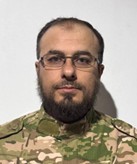
The division commander is Banyan Ahmad al-Hariri (Abu Fares). Al-Hariri served as an officer in Assad’s army until he defected to the rebels in 2011 and later became one of the founders and prominent commanders of Ahrar al-Sham an Islamist-Salafi organization supporting Sharia law (though considered relatively less extreme). Al-Hariri operated in southern Syria early in the civil war and later moved to the Idlib area.
44th Division
A division that was apparently established during March and operates mainly in the Zabadani area, northwest of Damascus. It appears that it includes several factions that operated in this area previously under different frameworks (HTS, Ahrar al-Sham, 77th Division, and others) that are now subordinated to its activity. This division also sent forces to the Sweida area following the fighting that broke out in the province in July 2025.

150th Brigade- Commander: Haitham Ajlouni (Abu Khaled Fajr).
Commander in Ahrar al-Sham in the Damascus area and later in the 77th Division. It appears that this brigade is in charge of Rif Damascus.
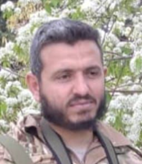
Abu Bakr al-Saddiq Brigade- Commander: Samir al-Salah (Abu al-Zubayr al-Qala’a). A brigade by this name operated within the HTS framework and it is possible that it is now subordinated to Division 44.
52nd Division
This division, sometimes defined as a Special Forces Division, operates in the Homs area and the border with Lebanon (from Tal Kalakh to al-Qusayr and up to the Qalamoun area) and engages, among other things, in preventing smuggling and combating the presence of Hezbollah in the area. Its forces took part in battles with clans affiliated with Hezbollah in the area of the town of Khush al-Sayyid Ali in early 2025. The majority of its manpower is composed of combatants who were previously part of HTS and organizations close to it. It appears that it was initially called the 103rd Division but between March- May its number was changed to 52nd.
During May and June 2025, documentation was circulated from various training programs held by the division, including basic combat courses, courses in various fields, competency-enhancement training, etc.
The division’s forces took part in the fighting against the Druze in Suwayda during July 2025 (some of them wore patches identified with HTS), and on social media, there are reports of several combatants who were killed and wounded.
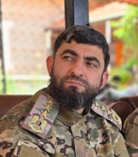
The Division commander is Haitham al-Ali (Abu Muslim Afs, Abu Muslim al-Shami), a prominent military commander who, prior to his appointment, was a member of Jabhat al-Nusra and commanded one of the organizations that operated under HTS.
84th Division
This division is supposed to be a special forces division whose central base is in Latakia, and its forces will operate in northwest Syria and in the area of the border with Lebanon.
According to those reports, it is expected to number about 30,000 combatants divided into six brigades- an armored brigade, an artillery brigade, an raid (assault) brigade, an urban warfare brigade, and two brigades specializing in mountain warfare.
A significant part of the manpower currently serving in this division consists of foreign combatants who came to Syria during the civil war and remained there. This includes combatants from Egypt, Jordan, Judea and Samaria and Gaza, Uzbekistan, Tajikistan, Turkey, Albania, the Chechnya region, and more. Additionally, from available photos and information, it appears that a significant portion of them is affiliated with the TIP faction (Turkistan Islamic Party), a Salafi-jihadist group based in Afghanistan with ties to al-Qaeda. Some of the combatants who operated under TIP are Chinese-Uyghurs who aspire to establish an Islamic Caliphate in China’s Xinjiang province. The number of combatants operating under TIP in Syria is estimated at a few thousand (about 3,500).
The decision to integrate foreign combatants with extremist ideology into the framework of the New Syrian Army received American approval and raised quite a few questions regarding Al-Sharaa’s sincerity. The main explanation given for this decision is that it is an attempt to halt the trend of defections to ISIS among organizations with a similar ideology and to try and control these elements within the army’s framework.
56th Division
This division operates in the Tartus area and the Syrian coast and does not have a clear organizational affiliation. Most of the reports related to it began appearing in May 2025, and it is possible that it was established slightly earlier. The division operates against forces affiliated with the Assad regime with the aim of stabilizing the situation on the Syrian coast, alongside assistance in civilian fields such as firefighting and maintaining public order.
In early June, several videos were published showing graduation ceremonies of approximately 1,200 new soldiers in the division, and it can be assumed that additional courses are currently taking place. It appears that a significant portion of the division’s soldiers come from the Syrian coastal area.
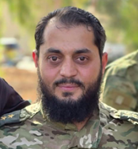
The division commander, Munir al-Sheikh (Abu Osama). Al-Sheikh, originally from the town of Ma‘arat al-Numan in the Idlib area, joined the rebels in the Idlib region at the beginning of the civil war and later held various roles in several rebel organizations in northern Syria, among them Jaysh al-Fateh, Abu Bakr al-Saddiq Brigades, and Uthman Brigade, andת also commanded various sectors within the framework of HTS
82nd Division
A division likely operating in the area of Hama and the Syrian coast from the bases of the former 25th Division. At this stage, there is no clear information regarding the structure of the division and the identity of the brigade commanders.
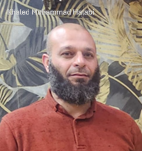
The division commander Khaled Muhammad Halabi (Abu Khattab), a former officer in Assad’s army who defected after the outbreak of the civil war. Over the years, Halabi advanced in the service of the rebels until he became the commander of the Ansar al-Tawhid organization (formerly operated under the name Jund al-Aqsa). This organization has an extreme Salafi-jihadist ideology and apparently even cooperated with ISIS at certain times.
Halabi is considered one of the prominent figures behind the planning and execution of the rebel offensive that led to the fall of the Assad regime.
The division’s forces took part in the fighting in Suwayda during July 2025, during which some were filmed wearing ISIS patches.
60th Division
A division operating in northern Syria, apparently north and east of Aleppo. It appears that the command staff of the division is mixed and composed of commanders who are former members of various organizations that operated within the HTS and the SNA, among them also those considered close to Turkey. One of the prominent organizations in this context is al-Jabha al-Shamiya, which some of the militias operating as part of it have Salafi orientation.
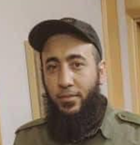
The commander of the division is Awad Muhammad (Abu Kutaybah al-Shamali), who commanded an organization that operated as part of HTS.
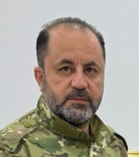
Deputy division commander- Madhar Najjar. Former senior member of the al-Jabha al-Shamiya organization.
64th division
This division operates in the area between Idlib and Aleppo. The division’s headquarters is currently located at the Abu Al-Duhur military airbase, about 50 km south of Aleppo. From the available information, it appears that many of its members had previously operated within the ranks of Faylaq al-Sham (a coalition of 20 Islamist organizations, some related to the Muslim Brotherhood).
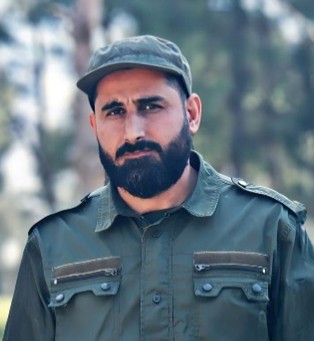
The commander of the division is Muhammad Gharib (Abu al-Sayyid Horan). Gharib, who was born in Idlib province, was one of the founders of Jaysh al-Fateh (a coalition in which several organizations had ties to Al-Qaeda) and later moved to Faylaq al-Sham, serving as the commander of the Idlib sector. Faylaq al-Sham, and Gharib in particular, are considered close to Turkey and the Muslim Brotherhood. During the war, the organization operated within the framework of the NLF and also cooperated with HTS.
42nd Division
This division operates in the area of the city of Palmyra and the Syrian desert in the east of the country. The organizational affiliation and identity of the combatants operating within it are not entirely clear at this stage, but it seems that at least some of them came from pro-Turkish organizations such as the Sultan Malik Shah Division.
The division is expected to be one of the main forces to fight ISIS cells operating in the Syrian desert. Another important mission is the neutralization of mines and unexploded ordnance, and the collection of weapons and ammunition left in the area from the days of the Assad regime.
Several combatants from the division were injured in one of the Israeli strikes on the Palmyra airport during March 2025.
Forces of the division took part in the fighting between the Druze and the regime during July 2025, and some even operated inside the city of Suwayda itself.
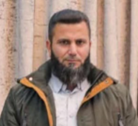
The commander of the division is Raad Arab (Abu Arab), originally from the town of al-Sukhna near Palmyra. Until the fall of the Assad regime, Arab served as the commander of the Suqur al-Sham organization, which operated under the SNA. The organization, which at its peak numbered about 10,000 combatants, holds an Islamist ideology and is considered close to the Ahrar al-Sham organization.
66th Division
This division, which was formed during March and April 2025, is responsible for the eastern border area of Syria, which includes Al-Bukamal, Deir ez-Zor, and Hasakah in a sector that extends over 250 km. The division’s forces control the Al-Bukamal border crossing area, conduct patrols, and so far, have established about 20 positions along the border. In addition, the division’s engineering forces are working to clear mines and unexploded ordnance in the border area.
The deployment of forces in this area began in mid-April, but it seems that it has not yet been fully completed, as there is still a manpower shortage.
The main challenges the division is expected to face are fighting ISIS cells and remnants of pro-Iranian forces, as well as weapons and drug smuggling. Additionally, the division’s forces have an important role in assisting the local governance mechanisms and internal security in everything related to ensuring public order. Another challenge, which emerged about a month after the deployment of the division’s forces, is exchanges of fire and clashes with SDF forces and Kurdish civilians, who also make stabilizing the situation in these areas more difficult.
Similar to other divisions, the 66th Division has also published several videos documenting graduation courses of various training and exercises. These showed, among other things, the use of armored vehicles, APCs, tanks, and more.
It appears that many of the division’s officials come from eastern Syria provinces, and at least some of its personnel previously operated within the HTS’ Zubair bin Al-Awam Brigade.

The commander of the division is Ahmad al-Muhmad (Abu Muhammad Shuri), originally from the city of Tabqa in the Raqqa area. Prior to his appointment, he served as a member of the Shura Council of HTS and as the commander of the Zubair bin Al-Awam Brigade.
86th Division
Like the 66th Division, this division also operates in eastern Syria and is in the stages of organizing. It was likely established during May 2025, and at least part of its manpower is based on combatants who operated within the framework of the Ahrar al-Sharqiya organization, which was backed by Turkey and was part of the SNA.
In addition, as part of the effort to integrate different forces into the ranks of the army, and as part of the need to reinforce the ranks of the division, it appears that the Suqur al-Sunna organization will join the 86th Division during the coming months. This organization, which was part of the SNA, has been operating in the Kurdish region in northeastern Syria since Turkey’s invasion of the area as part of Operation “Peace Spring”. Many of its operatives are tribal men from the Deir ez-Zor area.
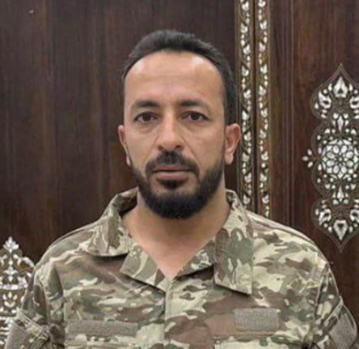
The commander of the division is Ahmad Ahsan Fiadh al-Hiyas (Abu-Hatem Shaqra). Al-Hiyas, 38, originally from the town of Shahil in the Deir ez-Zor area, joined the Ahrar al-Sham organization at the beginning of the civil war. In 2016, he left the organization and was among the founders of Ahrar al-Sharqiya. In his last position, he commanded Harakat al-Tahrir Wa’al-Binaa (The Movement for Liberation and Construction), which united four rebel organizations within the framework of the SNA.
Al-Hiyas studied in Turkey and apparently underwent military training there, and in various reports it is claimed that he operated alongside Turkish forces in several operations against the Kurds (“Euphrates Shield”, “Olive Branch”, “Peace Spring”).
Al-Hiyas and Ahrar al-Sharqiya have been under American sanctions since 2019 due to their actions against the Kurdish and Yazidi population (abuse of prisoners, executions, human trafficking, etc.).
His appointment sparked anger among the Kurdish residents in eastern Syria, and so far, several violent confrontations have been recorded, including shooting and shelling, between Kurdish residents and division forces. In addition, the division’s forces have already suffered casualties during several battles, apparently against ISIS forces in the area.
Several reports that appeared during June 2025 point to disorganization and difficulties in paying salaries regularly. This led several hundred combatants to leave the division and move to the 66th Division. In addition, it appears there are conflicts between forces within the division itself, stemming from tribal and organizational divisions.
54th Division
This division is based mainly on manpower from the Ahrar al-Sham organization, which operated in recent years in the Idlib area and is ideologically affiliated with al-Qaeda. In the period before the fall of Assad, the organization took part in a coalition that operated under Turkish influence.
In 2017, Ahrar al-Sham merged into the framework of HTS, but later a conflict developed between them, and Ahrar al-Sham withdrew from the coalition.
From various reports, it appears that the division operates in several areas in Syria, and it is currently unclear where its main area of activity is. Among other things, its forces operated in the Rif Damascus, Tartus, and Homs areas, as well as in clashes that occurred in Suwayda in July 2025.
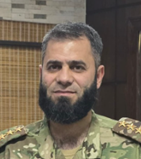
The commander of the division is Hussein Abdallah Obeid (Abu Suheib), originally from Kafr Zita (north of Hama). Until his appointment, Obeid served as the military commander of Ahrar al-Sham.

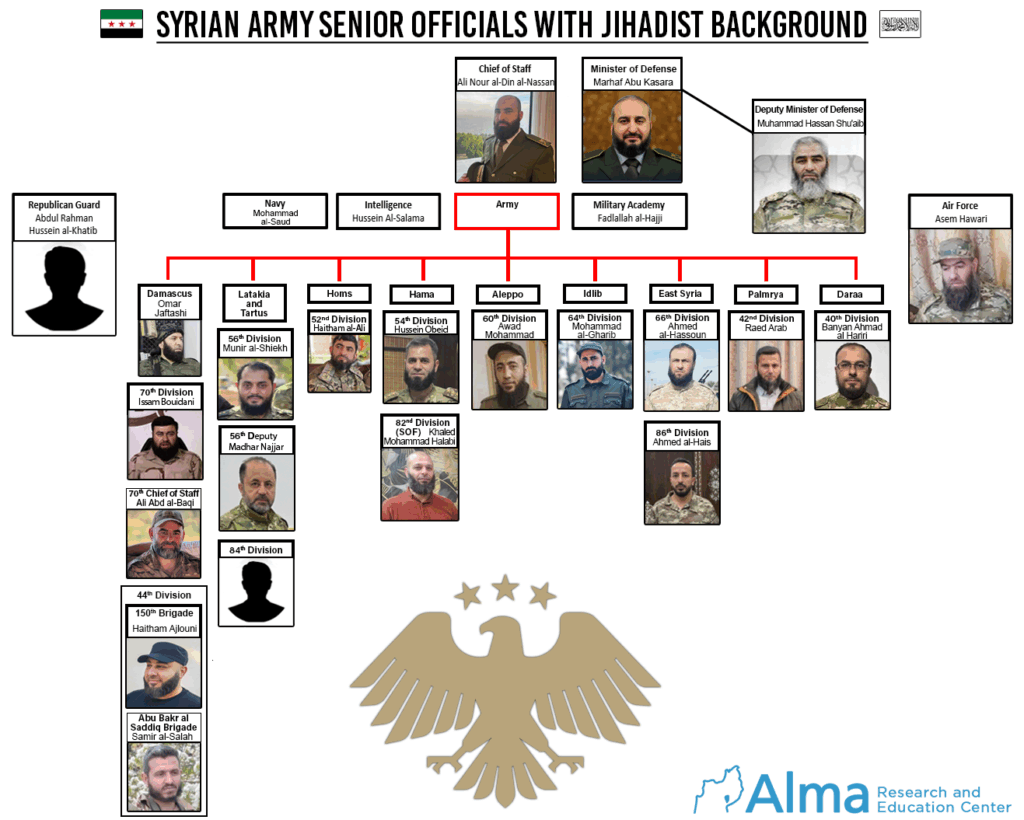

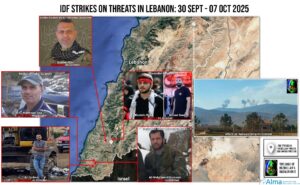
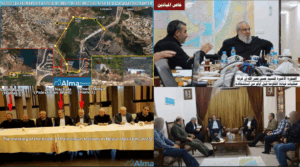
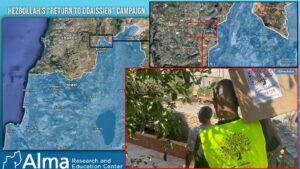
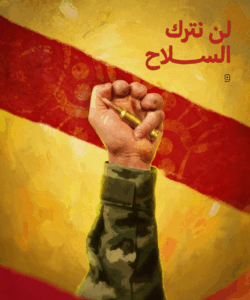
2 Responses
I wish they would be assassinated or tried very soon, because the world is not safe as long as these people exist. It is not only Israel’s security that is threatened, but the entire world.
Dear Boaz,
The terrorist enemies are many.
But they will die together like the Pharoah’s army when they followed to attack Israel leaving Egypt. They are like the flies of pestilence that will be removed from the earth.